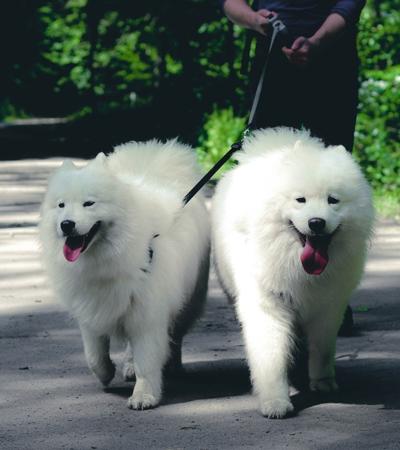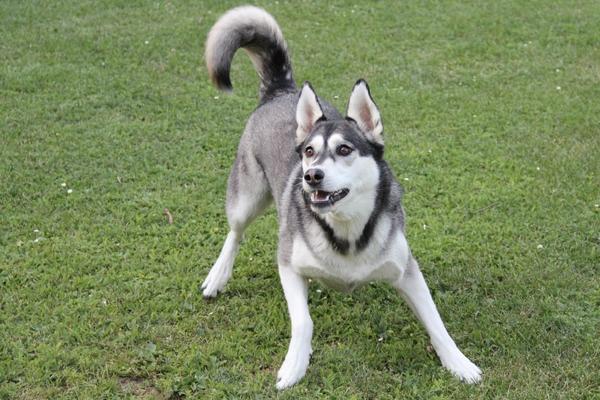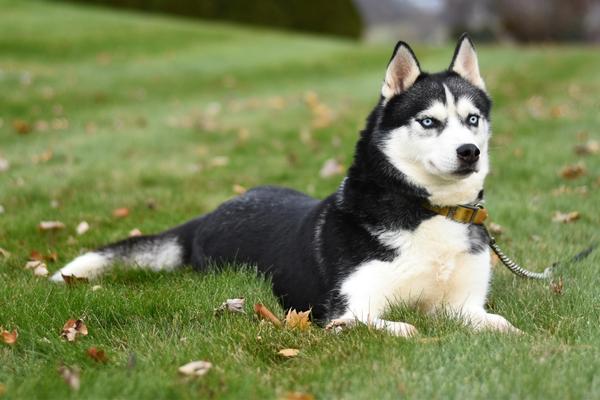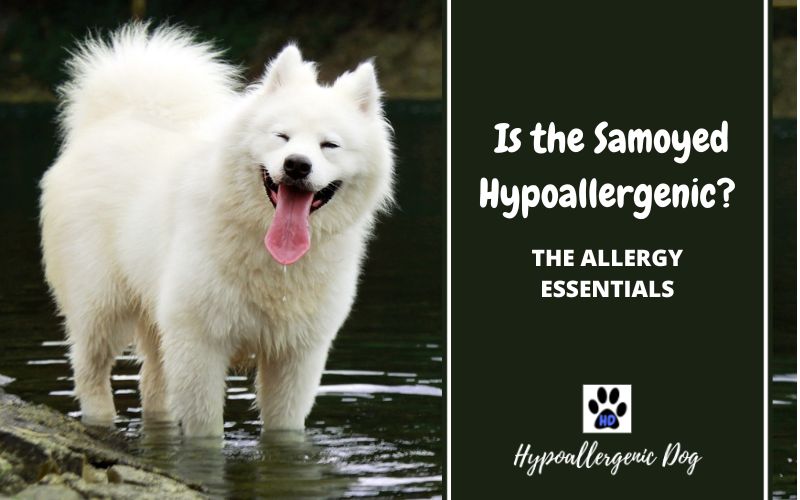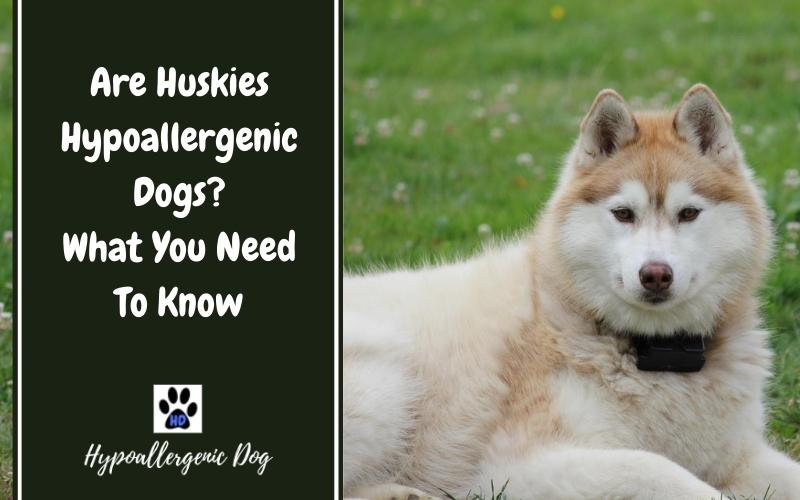The Samoyed vs Husky — the first thing that springs to mind is their similar wolfish appearance. Both breeds are also fluffy, built for cold temperatures and pulling sleds for miles in the snow.
With so many likenesses, you may be wondering, what is the difference between Samoyed vs Husky?
To help you decide which of these energetic and friendly dogs is the best breed for you, we’ve put together this detailed comparison. In this article, we’ll share how these two sled dogs weigh up when it comes to their size, temperament, training, exercise, and grooming needs.
Samoyed vs Husky — Contents
Samoyed
Husky
Personality
Loyal
Friendly
Playful
Energetic
Intelligent
Eager to please
Loving
Intelligent
Hyperactive
Playful
Energetic
Loyal
Family Dog
Yes
Yes
Height
21-23.5 inches (male)
19-21 inches (female)
21-23.5 inches (male)
20-22 inches (female)
Weight
45-65 pounds (male)
35-50 pounds (female)
45-60 pounds (male)
35-50 pounds (female)
Cost
$775-$1700
$450-$1500
Hypoallergenic
Yes
No
Lifespan
12-14 years
12-14 years
Coat Colors
White, Cream, White & Biscuit
White, Black, Black & White, White & Red, Silver, Gray, Gray & White
Trainability
Easy
Average
Samoyed dogs (Sammies) are thought to be named after the Samoyede people, originating in Russia and Siberia. Historically, these dogs were used to pull sleds through Arctic conditions, herd reindeer, and hunt down bears.
Descendants of Spitz dogs and the Nenet Herding Laikas, the Samoyed has become a popular domesticated pet over the years. While they may appear wolf-like in their appearance, Samoyed dogs don’t share any lineage with wild wolves.
One stand-out quality of the Samoyed is their white and fluffy double coat. These cuddly creatures are gentle and friendly but are full of energy too. To keep your Sammie on their best behavior, owners must make sure they’re providing all the mental and physical stimulation they need.
Is the Samoyed for Me?
Whether you’re a single person, a couple, or have children, the Samoyed will make a great furry addition to your family. Known to be very affectionate and gentle with youngsters, the Samoyed will keep the whole family entertained.
People who enjoy long walks, hiking, and spending plenty of time outdoors will get on well with the forever-smiling Sammie.
Samoyed Pros
- Hypoallergenic coat.
- Kind and gentle nature.
- Loyal and loving toward owners.
Samoyed Cons
- Can misbehave when not getting enough exercise.
- Sheds coat twice a year.
- High intelligence can lead to boredom.
Husky dogs (Sibes) originated in Siberia, and, like the Samoyed, their heritage originates with Laikas and Spitz breeds. The Sibe we know today was purposefully bred by the Chukchi people for companionship and to pull sleds through thick snow.
Like the Samoyed, Huskies have a double coat. The gray, white, black, or silver fur gives them their wolfish appearance, but also serves a very important purpose. With their roots in chilly Siberia, the Husky’s coat is designed to help them regulate their temperature and stay warm in harsh Arctic temperatures.
Is the Husky for Me?
Siberian Huskies are very popular dogs, and it’s no surprise — Huskies love everyone! It’s their nature to try and befriend everyone they meet — they love strangers and other canines. Hence, if you want a guard dog, don’t get a Husky.
Also, if you want a dog that can walk off the leash, a Husky isn’t the breed for you. Huskies are bred to run, and you’ll have a tough time getting your pooch to come back if you let them run free on your daily walks.
Huskies may not be the best choice for first-time dog owners. As pack dogs, they need a leader to follow, and if the Alpha isn’t made clear early on, they will give the role to themselves. However, Huskies make great family dogs, they adore being part of the ‘family pack’.
Husky Pros
- Naturally clean — no dog smell.
- Striking appearance.
- Good-natured and friendly.
Husky Cons
- Sheds heavily.
- Can be stubborn.
- Strong prey drive.
So, are Samoyeds bigger than a Husky? The truth is, size is comparable, and they both fall into the medium-to-large-sized dog breed classification.
Weight
Male Samoyeds can weigh slightly more than male Huskies. A fully grown Samoyed can weigh up to 65 pounds, whereas the Husky is unlikely to reach more than 60 pounds. Yet, the females in both breeds weigh somewhere between 35 and 50 pounds.
Height
Huskies come out on top when looking at height, but only by an inch! When comparing a full grown Samoyed vs Husky, the males grow to the same height range of 21 to 23.5 inches. However, female Huskies are slightly taller than their Samoyed cousins, growing to a maximum of 22 inches instead of 21 inches.
The Samoyed and Husky may be very similar in size, but how do their personalities compare?
Samoyeds and Huskies are loyal and loving dogs. Both of these breeds enjoy spending as much time as possible with their owners. Plus, their gentle and kind nature makes them a popular choice for families.
However, there is a key difference between the Samoyed and Husky — one is a good watchdog, and the other wants to be everyone’s friend.
Samoyed
The Samoyed is more likely to be protective and vigilant and try to warn off potential intruders and threats. They can be quite vocal, however, this breed isn’t aggressive.
Husky
Siberian Huskies love everyone and will want to befriend the person trying to break into your home, rather than scare them away! Like the Sammie, they’re barkers, but Huskies are more likely to get on with other dogs.
Samoyeds and Siberian Huskies are sled dogs — developed for endurance and strength. This ancestral energy is alive and kicking in both dogs, thus they require plenty of daily exercise.
Whether you choose a Samoyed or Husky, you need to set aside at least 2 hours every day for walkies. If either of these breeds are not getting the exercise they need, they can be prone to misbehaving. Huskies are known to become destructive when left without exercise and mental stimulation.
Give your pup plenty of time to run and play, and they will be much less mischievous when they’re at home. Playing games with your dog is another good way to provide mental stimulation and help your dog burn off any remaining energy after their walk.
Of the two breeds, Huskies have the edge on hyperactivity and are more likely to get up to mischief when their exercise needs aren’t being met.
All dog breeds need to be socialized early on during their puppyhood, and training should begin as soon as you bring your dog home. Patience, consistency, and positive reinforcement are the key ingredients to successfully training your dog.
Samoyed
Samoyeds were traditionally bred to be close companions to the Samoyede people and continue to have a built-in connection with their human owners today. Hence, they’re easy to train because they have a deep desire to please their owners and thrive on making their humans happy.
Husky
Huskies can be a little more tricky to train, but it’s not impossible. This breed is known to have a stubborn streak and an independent side that can cause problems during training.
While very intelligent, it means Huskies can lose interest quite quickly. To keep them engaged, keep your sessions short and stimulating. When your Husky is having fun, they’re much more likely to learn and stay on track.
But, bear in mind.
When training both the Samoyed and Husky, it’s essential that you’re the leader of the pack. If you don’t secure yourself as the Alpha, you may have a hard time getting your Husky or Samoyed to respect you and obey commands.
So, just exactly how much will one of these superb sled dogs set you back?
Samoyed
Just short of the top 50 most popular breeds (according to AKC), Samoyed puppies cost, on average, anywhere between $775 and £1700.
Husky
Siberian Huskies are the cheaper of the two breeds, as long as you don’t buy a puppy from a premium working dog bloodline! This could be due to more availability — they’re 19th in AKC’s popularity rankings. The top dogs can cost over $3000, but a Siberian Husky pup will cost between $450 and $1500, on average.
If you have dog allergies, this is the information you’ve been waiting for. The Samoyed and Husky both have fluffy double coats and shed their fur throughout the year. However, one is hypoallergenic and the other is known as one of the worst-shedding dogs around.
Samoyed
Despite their long, dense double coat, moderate everyday shedding, plus seasonal blowouts, the Samoyed is hypoallergenic. But how is this possible?
Simple. The Sammie is an exception, a breed that doesn’t produce much dander — which triggers allergies. What’s more, due to the shape of their jaws, they don’t drool either — another allergen offender.
In short, the Samoyed’s shedding and drooling habits shouldn’t be problematic for people with allergies.
Husky
Huskies, on the other hand, are prolific seasonal shedders, and they also shed modestly the rest of the time. Hence, they will release dander into your home, on your soft furnishings, and into the air you breathe.
For these reasons, if you suffer from allergies, the Husky isn’t a canine you’ll be compatible with.
Both these fluffy dogs are going to require some serious grooming, but let’s see how much they need.
Brushing
The blue-eyed Husky with his thick coat will need to be groomed regularly to continue to look their best. You should brush them weekly, and deshedding combs can be used regularly during shedding season to keep fur loss under control.
Samoyeds have a longer coat that needs to be brushed daily to stay free of knots and tangles. During seasonal shedding, the grooming rules remain the same — daily brushing/combing is necessary. It will also encourage the undercoat to fall out faster.
Bathing
Huskies are known to be excellent at self-cleaning, and it’s rarely necessary to wash your Husky more than a few times a year. Obviously, if you have a show dog, you’ll need to take them to the groomer more regularly to have their coat styled and looking its best.
The Samoyed, on the other hand, will require frequent bathing at least every six weeks, but it could be as often as every week if needed. You may want to wash them when they’re dirty or smelly, but a strict bathing routine isn’t necessary.
Nails and Teeth
The same rules apply for both the Samoyed and Husky here.
Keep an eye on your dog’s nails, they will need trimming approximately every 4 to 6 weeks. If you’re walking your dog daily, their nails should wear down naturally, but trips to the groomers may still be necessary to keep your dog’s nails at a comfortable length.
A good dental routine is essential for your dog’s oral hygiene. Aim to brush their teeth around three times a week, using a veterinarian-approved canine toothpaste.
Conclusion
While these two breeds possess many similarities — they’re fun and friendly dogs with a wolf-like, stunning appearance — but they aren’t identical.
Still trying to decide between Samoyed vs Husky? In short, Samoyeds are the best choice for people with allergies, and Huskies are better suited to experienced owners who can handle their stubborn and strong-willed nature.
Are Samoyed Bigger Than a Husky?
There is very little difference in size between the Samoyed and the Siberian Husky. Samoyeds can weigh slightly more — up to 65 pounds instead of the Husky’s 60 pounds. However, Samoyeds can be slightly shorter, the smallest females being around 19 inches tall.
Is a Samoyed a Type of Husky?
Are Husky and Samoyed the same? The answer is no. These breeds have a lot in common, they’re both working sled dogs with a wolf-like appearance and fluffy coats. However, Samoyeds and Huskies are two separate breeds and differ slightly in personality, temperament, and appearance.
Do Black Samoyeds Exist?
Purebred Samoyed dogs only come in white, cream, or biscuit colors. However, black Samoyed dogs do exist, but they’re often mixed with another breed somewhere in their lineage.
Can You Breed a Samoyed and a Husky?
Yes, it is possible to breed a Samoyed and a Husky together. This crossbreed is known as a Samusky.
How Big Is a Full Grown Samoyed?
Samoyeds vary in size, and the males are slightly heavier and taller than their female counterparts. A big Samoyed can weigh as much as 65 pounds and reach up to 23.5 inches tall at the shoulder.
Which Is Better Samoyed or Husky?
This will depend on your circumstances, plus whether you have allergies or not.
Both dogs are active, playful and friendly dogs — yet, the Samoyed is hypoallergenic, the Husky isn’t.
Are Samoyeds Strong Dogs?
This dog was bred for a purpose — to pull sleds and for hunting, so they’re powerful dogs.
Do Samoyeds Shed as Much as Huskies?
According to the AKC Huskies shed a little more than the Samoyed. But the latter is a hypoallergenic breed.
Are Samoyeds Hyper?
The Samoyed is a relatively high-energy dog, but this doesn’t mean that they are hyper. With enough exercise and mental stimulation, that energy can be put to good use.


